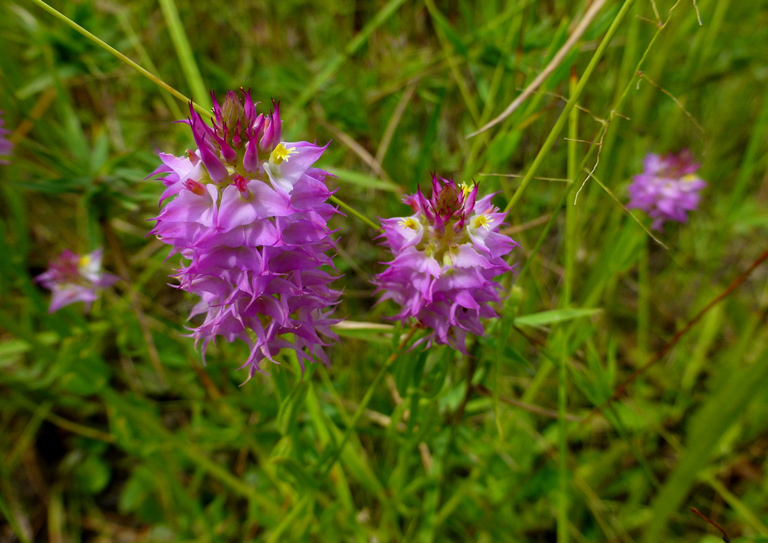Drumheads
Pictured above: Drumheads (Polygala cruciata) by Eleanor Dietrich. Click on terms for botanical definitions. View post as a PDF.
Drumheads (Polygala cruciata) is a low-growing wildflower that blooms from late spring through fall. Its flowers are tiny, yellowish-white and tubular. They are surrounded by large, showy pink bracts that are easily mistaken as the flower’s petals. The inflorescence develops as a cylindrical cluster at the terminal end of the flower stalk. Leaves are short, linear and arranged in whorls of four.
Drumheads occurs naturally throughout most of Florida in wet pinelands, savannas and other open wetland habitats, as well as along marsh edges. Although the flowerheads are conspicuous, the plant is easy to overlook as it is often obscured by the grasses and other forbs that grow with it.
The name Polygala comes from the Greek polys, which means “many or much,” and gala, which means “milk.” It is so-named because it was once believed that the presence of Polygala species in cow fields would result in higher milk production. Cruciata means “cross-shaped,” hence the plant’s other common names, cross milkwort, cross-leaf milkwort and cross-leaf drumheads.
Family: Polygalaceae (Milkwort family)
Native range: Nearly throughout Florida
To see where natural populations of climbing aster have been vouchered, visit florida.plantatlas.usf.edu.
Soil: Moist to inundated soils
Exposure: Full sun
Growth habit: 4–12”
Garden tips: You’ll have to visit a natural area to see this little gem as it is not commercially available in plant or seed form.
For more information on other Polygala species, see these resources:

